#jo ann southern
Text

18 notes
·
View notes
Note
Do you have any gothic novels that you can recommend off the top of your head? Especially to people who want to try their hand at the genre? I've hit a wall in my project and I need to get some fresh inspiration, but I don't know where to start and the book side of tumblr failed me the last time I tried asking them for recs
Hell yeah! I made some old posts for this a while back, but it's good to look at it again with my more recent taste! Let's see...
Classic Gothics
Dracula: The one, the only. Often imitated, never equalled.
Frankenstein: Short, sad and world changing! Can get a little slow at parts, but definitely worth it. (True story, my parents read this to me as a fetus to calm my kicking, so it's part of my personal mythology!)
The Case of Charles Dexter Ward: The most gothic of Lovecraft's work, and possibly my favorite. Novella length, usually found in collections.
The Picture of Dorian Gray: Sinister, sexy, philosophical, with a main character I want to punch in the face!
Carmilla: Another novella, about as lush and swooning as vampire stories get.
The Hound of the Baskervilles: A very readable gothic mystery.
Confessions of a Justified Sinner: This one isn't as action packed, but if you have big religious issues like me, it's incredibly haunting.
The Monk: Like the above, but sleazier and crazier!
Northanger Abbey: A gentle parody of early gothics, starring an adorable proto-goth girl.
The Italian: I'll be honest, I find Anne Radcliffe kind of a slog, but if you liked Northanger Abbey and want to read what Catherine Morland reads, this is probably the most accessible.
A Long Fatal Love Chase: This starts as campy and then takes a plunge into gut-wrenchingly intense. The book Jo March was always trying to write!
The Strange Case of Doctor Jekyll and Mr. Hyde: Another novella, and Stevenson is one of the best writers out there for excitement!
The Werewolf of Paris: Gothic monster as serial killer, still scary today.
Rebecca: The foundation of all gothic romance to come afterwards. A ghost story without a ghost, with an ending that's still debated as happy or sad!
Jane Eyre: The other foundation of all gothic romance to come afterwards. I bounced off the child abuse-heavy beginning a few times, but I'm very glad I finally read to the good stuff!
The Castle of Otranto: Considered the first gothic novel, a goofy b-movie in written form.
Modern-ish Gothics (post-1950 or so)
The Dark Descent of Elizabeth Frankenstein: Fuck the haters, I love this book.
Mexican Gothic: Genuinely scary, genuinely romantic, genuinely creative. A favorite.
Blackwater: A southern gothic saga of a family in a flooded town, whose scion marries a woman who isn't quite human. A whirlwind ride!
A Bloodsmoor Romance: Another family saga, this one northern gothic, with sisters whose lives all go off the rails in different supernatural ways. Give this a try before writing Joyce Carol Oates off entirely!
The Silver Devil: A nasty, problematic bodice ripper where you'll cheer for the heroine to bring the hero down low!
Interview with the Vampire: To be honest again, I'm not super into Anne Rice, but this is a page-turner, and every vampire book that has come after it has had to respond to it in one way or another. Read the next two Vampire Chronicles books if you like it!
A Taste of Blood Wine: My own preferred sexy vampire romance!
The Bloody Chamber: The ultimate dark sexy fairy tale work, accept no substitutes.
Haunted Castles: Contains the brilliant novella Sardonicus, as well as some other campy gothic stories!
A Great and Terrible Beauty: Many millennials were introduced to the gothic genre via this, Fear Street Sagas, or A Series of Unfortunate Events. This is my favorite of the three, though the sequels are a bit of a letdown.
Gormenghast: This series is a throwback to the pseudo-medieval, Otranto-style gothic, but much better. Don't read Titus Alone.
807 notes
·
View notes
Text
The Antonian Reading List
Mark Antony: A Life by Patricia Southern (Highly recommended!)
Mark Antony: A Biography by Eleanor Goltz Huzar (Highly recommended!)
The Life and Times of Marc Antony by Arthur Weigall (Recommended)
Marc Antony: His Life and Times by Allan Roberts (Recommended)
Marc Antony by Mary Kittredge
Antony & Cleopatra by Patricia Southern
Antony & Cleopatra by Adrian Goldsworthy (By far the most negative book on Antony by a modern historian, the Cleopatra portion is better)
Mark Antony: A Plain Blunt Man by Paolo de Ruggiero (Recommended)
Mark Antony and Popular Culture: Masculinity and the Construction of an Icon by Rachael Kelly
Mark Antony's Heroes: How the Third Gallica Legion Saved an Apostle and Created an Emperor by Stephen Dando-Collins
A Noble Ruin: Mark Antony, Civil War and the Collapse of the Roman Republic by W. Jeffrey Tatum (Highly recommend!)
Mark Antony & Cleopatra: Cleopatra's Proxy War to Conquer Rome & Restore the Empire of the Greeks by Martin Armstrong
Actium and Augustus: The Politics and Emotions of Civil War by Robert Alan Gurval
The Roman Revolution by Ronald Syme (Recommended)
Octavian, Antony and Cleopatra by W. W. Tarn
Fulvia: Playing for Power at the End of the Roman Republic by Celia E. Schultz
Cleopatra: Last Queen of Egypt by Joyce Tyldesley (Highly Recommended!)
Cleopatra by Michael Grant (Highly Recommanded!)
Cleopatra: A Life by Stacy Schiff (Highly Recommended!)
Cleopatra - A Biography by D. Roller
Cleopatra and Antony by Diana Preston
Cleopatra by Alberto Angela (Recommended)
Cleopatra by Jacob Abbott
Cleopatra the Great by Joann Fletcher
Cleopatra and Egypt by Sally-Ann Ashton
Cleopatra and Rome by Diana E. E. Kleiner
Cleopatra Her History Her Myth by Francine Prose
Cleopatra Histories, Dreams, and Distortions by Lucy Hughes Hallett (Recommended)
Cleopatra’s Daughter Egyptian Princess by Jane Draycott
The Storm Before the Storm by Mike Duncan
SPQR: A History of Ancient Rome by Mary Beard (Good for beginners)
The Last Assassin: The Hunt for the Killers of Julius Caesar by Peter Stothard
Robicon by Tom Holland
Alesia 52 BC: The final struggle for Gaul (Campaign) by Nic Fields
Actium 31 BC: Downfall of Antony and Cleopatra (Campaign) by Si Sheppard
Pharsalus 48 BC: Caesar and Pompey – Clash of the Titans (Campaign) by Si Sheppard
Philippi 42 BC: The death of the Roman Republic (Campaign) by Si Sheppard
Mutina 43 BC: Mark Antony's struggle for survival (Campaign) by Nic Fields
The War That Made the Roman Empire: Antony, Cleopatra, and Octavian at Actium by Barry Strauss
The Battle of Actium 31 BC: War for the World by Lee Fratantuono
Rome and Parthia: Empires at War: Ventidius, Antony and the Second Romano-Parthian War, 40–20 BC by Gareth C Sampson
Rivalling Rome: Parthian Coins and Culture by Vesta Curtis
Classical sources:
Plutarch’s Lives
Cicero: Philippics, Ad Brutum, Ad Familiares
Appian, The Civil Wars
Dio Cassius, The Roman History
Suetonius, The Twelve Caesars
Flavius Josephus, The Jewish War
Livy, The Early History of Rome
Tacitus, Annals and Histories
Friction:
The Tragedy of Julius Caesar by William Shakespeare
The Tragedy of Antony and Cleopatra by Willian Shakespeare
All For Love or The World Well Lost by John Dryden
The Siren and the Roman – A Tragedy by Lucyl
Caesar and Cleopatra by George Berbard Shaw
Cleopatra (play) by Sardou
Antony by Allan Massie
I, Claudius by Robert Graves
I, Cleopatra by William Bostock
Cleopatra by H. Rider Haggard
Cleopatra by Georg Ebers
Kleopatra (Vol I & II) by Karen Essex
Last Days with Cleopatra by Jack Lindsay
The Memoirs of Cleopatra by Margaret George
When We Were Gods by Colin Falconer
The Masters of Rome series by Colleen McCullough
Caesar's Soldier: Mark Antony Book I by Alex Gough (Ongoing series)
The Antonius Trilogy by Brook Allen
The Last Pharaoh series by Jay Penner
Throne of Isis by Juith Tarr
Hand of Isis by Jo Graham
Woman of Egypt by Kevin Methews
The Ides of Blood 01-06 (Comics)
Terror - Antonius En Cleopatra (Erotic yet pure love, Dutch comics)
Cleopatra - Geschiedenisstrip (Dutch comics)
Les Grands Personnages de l Histoire en Bandes Dessinees – Marc Antonie (French comics)
Les Grands Personnages de l Histoire en Bandes Dessinees – Cleopatre (French comics)
Les Grands Personnages de l Histoire en Bandes Dessinees – Julius Caesar (French comics)
Cléopâtre (French Manga)
Ils Ont Fait L'histoire - Cléopâtre (French Graphic Novel)
#mark antony#marc antony#marcus antonius#cleopatra#cleopatra vii#antony and cleopatra#rome#ancient rome#roman history#roman republic#roman empire#books#book recommendations#reading list#to read list#history
97 notes
·
View notes
Text
Total ROTI headcanons
race & identities
mike
Ethnicity: italian-mexican
Nationality: canadian
second gen immigrant from mexico to manitoba, canada
speaks spanish, italian, and english
plural they/them collective pronouns
no set identity bc of being a system, ive made a post about the alters identities
Scott
Race: White
first gen immigrant from southern US to canada
speaks english
cis straight
Anne Maria
Ethnicity: Mexican
Nationality: American-Canadian
Moved from Jersey to Canada
Speaks english
she/her
cis straight
Zoey
Ethnicity: Japanese
Nationality: Canadian
speaks english
she/her
cis straight
Dakota
Race: White
Nationality: Canadian
Speaks english
she/her
cis straight
Dakota
Ethnicity: Russian
Nationality: Canadian
lives in Quebec
speaks english, french, and russian
They/She
Pangender Pansexual
Lightning
Ethnicity: Morrocan
Nationality: Canadian
speaks english
he/him
cis straight
B
Race: Black
Nationality: American-Canadian
Moved from Brooklyn to Canada
speaks english and french
he/him
transmasc unlabled
Brick
Ethnicity: Korean-Chinese
Nationality: Canadian
speaks english and chinese mandarin
he/him
cis gay
Sam
Race/Ethnicity: White-Ashkanazi Jew
Nationality: Canadian
speaks english, hebrew, arabic, and some japanese and chinese
he/him
cis straight
Cameron
Race: Black
Nationality: Canadian
speaks a little bit of a lot of things but only fluent in english
he/him
cis idk what
Jo
Ethnicity: Polish-Ukrainian-German-Greek
Third Gen Ukrainian immigrant to canada
Nationality: Canadian
speaks english
she/her
?? lesbian
Staci
Race: White
Nationality: Canadian
speaks english
she/her
cis straight
27 notes
·
View notes
Text


Viking Sword from Warrior's Grave Unearthed in Norway
The Viking Age weapon was discovered by a homeowner clearing land for an extension.
A man digging in his yard to build an extension of his house in southern Norway has unearthed the 1,100-year-old grave of a Viking warrior who was buried with weapons.
The finds include a rusty iron sword in two pieces; its hilt style enabled archaeologists to date the burial to the late 800s or early 900s, during the Viking Age, Joakim Wintervoll — an archaeologist who works for the local government of Agder County, where the relics were found — told Live Science.
"We have a good record of how the 'fashion' in the shapes of sword handles developed in Norway, from early ages up to more modern eras," he said. "Comparing it to other known sword handles, we believe this sword is from the late ninth century to the 10th century."

Other artifacts found in the grave included a long spear designed to be used on horseback, called a lance; glass beads and a belt buckle gilded with gold; and a bronze brooch. Neither human nor animal remains have yet been discovered there.
The artifacts seem to have belonged to a Viking warrior. "The lance suggests that this was someone that was proficient in combat from horseback," Wintervoll said. And the warrior was "definitely someone of means, based on the gold-gilded jewelry."

Viking burial
The grave and its artifacts were discovered in late June in the yard of a house in the mainly rural district of Setesdal, beside a lake about 125 miles (200 kilometers) southwest of Oslo. Homeowner Oddbjørn Holum Heiland had started using a mechanical digger to clear the spot in his yard where he and his wife Anne planned to extend their house, according to Science Norway.
"I wasn't going to dig a lot, just a little bit in the slope behind the house, to get some more space between the house and the land," he told the news outlet.


He first found an oblong slab just below the surface; it's now been recognized as a gravestone. Further digging revealed the hilt of the sword; Holum Heiland then realized his yard must hold other Viking artifacts, so he stopped digging and called the county archaeologists.
Wintervoll and Jo-Simon Frøshaug Stokke, an archaeologist from Oslo's Museum of Cultural History, visited the site a few days later. No Viking artifacts had been found before at the property, Wintervoll said, but a Viking grave containing a sword, spear, glass beads and a horse bridle were discovered on a nearby farm in the 1930s.
Although it's "a bit too early to say" whether these two graves have a connection, "it is interesting that they are relatively close and have almost identical finds in them," he said.
Ancient claim
It is possible that a Viking warrior was buried at the site as a way for their descendants to claim ownership of the land around it, Wintervoll said. Or, perhaps it had only family significance.
"No grave mound was known to have been on this homestead," Wintervoll said. In Norway, this type of grave is known as a "flatmarksgrav," which translates to "flat field grave," he added.
The person interred there might have been buried whole, or cremated ashes may have been laid down in the grave. "At this point in time, the practice varied a bit from place to place, but we have yet to find any burnt bones," he said.
The grave seems to have been dug on an almost east-west axis, which would align with sunrise and sunset, and the only grave marker seems to have been the oblong stone above it.
"Right now, we don't think this is a grave that was meant to be visible at a great distance," Wintervoll said. "These types of graves might have a more family or private function."
By Tom Metcalfe.

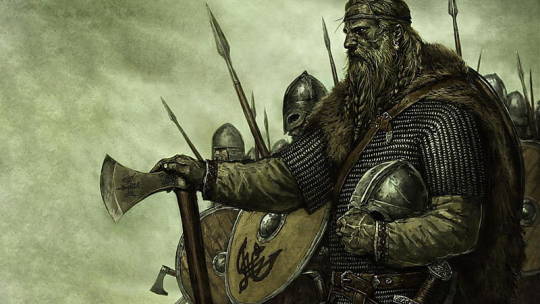

#vikings#Viking Sword from Warrior's Grave Unearthed in Norway#viking grave#ancient grave#ancient tomb#ancient artifacts#archeology#archeolgst#history#history news#ancient history#ancient culture#ancient civilizations#viking history
39 notes
·
View notes
Photo

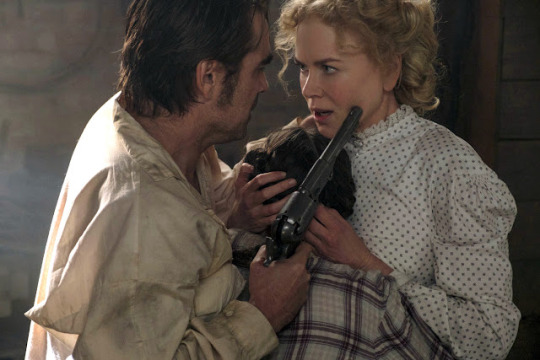
Geraldine Page and Clint Eastwood in The Beguiled (1971)
Colin Farrell and Nicole Kidman in The Beguiled (2017)
The Beguiled (Don Siegel, 1971)
Cast: Clint Eastwood, Geraldine Page, Elizabeth Hartman, Jo Ann Harris, Darlene Carr, Mae Mercer, Pamelyn Ferdin, Melody Thomas Scott, Peggy Drier, Patricia Mattick. Screenplay: Albert Maltz, Irene Kamp, based on a novel by Thomas Cullinan. Cinematography: Bruce Surtees. Production design: Ted Haworth. Film editing: Carl Pingitore. Music: Lalo Schifrin.
The Beguiled (Sofia Coppola, 2017)
Cast: Colin Farrell, Nicole Kidman, Kirsten Dunst, Elle Fanning, Oona Lawrence. Angourie Rice, Addison Riecke, Emma Howard. Screenplay: Sofia Coppola, based on a novel by Thomas Cullinan and a screenplay by Albert Maltz and Irene Kamp. Cinematography: Philippe Le Sourd. Production design: Anne Ross. Film editing: Sarah Flack. Music: Phoenix
Why some movies get remade and others don't is one of the abiding mysteries of the business. There doesn't seem to be a very clear reason why Don Siegel's 1971 The Beguiled should be a movie that Sofia Coppola would choose to remake 46 years later other than that it's a pretty good premise: a wounded Yankee soldier is taken in by a Southern girls' school who hide him from the Confederates until events turn them against him. The premise does have a slightly pornographic quality to it, but that's unlikely to have motivated the remake. Whatever the reason, we now have two pretty good versions of the story, the first starring an actor who became known for a taciturn masculinity, the second with a softer, more feminine (not to say feminist, because who knows what that means in any given context) approach. In fact, the two films are almost complementary, notable as much for what the remake leaves out as for the way in which Coppola changes the tone of the first version. Siegel's film is rougher and more action-filled, and it treats the sexual tension of the material in a more heated manner -- not to say overheated, which the 1971 version veers toward in its suggestions that Martha, the girls' school headmistress, not only committed incest with her brother but also had a lesbian relationship with (or at least attraction toward) the head teacher, Edwina. Times have changed, and Coppola steers clear of both, probably because they add nothing to the main story and same-sex attraction doesn't have the the power to shock in 2017 that it did in 1971. Coppola also eliminates a major character from Siegel's version, the slave Hallie (Mae Mercer), who serves as a kind of interlocutor with Clint Eastwood's McBurney, the two commenting on their different forms of captivity. Although the major characters retain the same general outlines, Coppola's Martha and Edwina, Nicole Kidman and Kirsten Dunst, are less eccentric performers than Siegel's Geraldine Page and Elizabeth Hartman. I think this works to Coppola's benefit, making the women's turn against McBurney more startling, even a little tragic, than in Siegel's film. In Siegel's version, the girl (Jo Ann Harris) who lures McBurney, called Carol in his film, is more vulgarly hot to trot than Coppola's Alicia, played with more subtlety by Elle Fanning. As for the two versions of McBurney, Coppola gives hers more of a backstory: an Irish immigrant lured into the Union Army by the promise of ready cash when he agrees to serve as a substitute for a Yankee reluctant to fight. Colin Farrell is also a more versatile actor than Eastwood, whose tough guy persona makes it hard for us to credit his acquiescence. The scene in which McBurney eats the poisoned mushrooms comes off better in Coppola's version because Farrell lets us see the poison taking its effect, whereas Siegel decides not to show the effect on Eastwood's McBurney. Yet somehow, I prefer the Siegel film, perhaps because there's an inherent cheesiness to the story's melodrama that Siegel embraces but Coppola strives to downplay.
14 notes
·
View notes
Text
More transwomen should have southern belle names, so may I propose:
Becky Jo.
Becky Anne.
Cecilia.
Cecelia Lynn.
Tilly (short for Matilda, extra points if you add Lynn, Lee, Anne, Marie, or Jo).
Barbara Anne.
Barbara Lee.
Barbara Jo.
Barbara Jo Beth.
Lynette.
Josephine Marie.
Josephine Anne Marie.
Carla.
Sarah Marie.
Sarah May.
Sarah Lee (like the bread).
Sarah Jo.
Sarah Anne.
Annie Beth.
Annie Lee.
Annie Marie.
Anne Marie.
Katherine Anne.
Katherine Anne Marie.
Katherine Marie.
Mary Katherine.
Katie Lynn.
Katie Anne.
Katie Lee.
Katie Marie.
Carol Anne.
Carol Lynn (not Caroline or Carolyn).
Betsy Jo.
Missy.
Jenny.
Leanne.
Luanne.
Lucy Lee.
Lucy Marie.
Lucy Anne.
Lucile (speaks for itself.)
Kerri or Carrie (not short for anything).
Carrie Anne.
Clara Beth.
Clara Jo.
Clara Anne Marie.
Clara May.
Jo Anne (not Joanne).
Peggy.
Hannah Beth.
Hannah Marie.
Hannah Jo Beth.
Maggie.
Maggie Anne.
Maggie Marie.
Maggie May.
Bethany.
Ryanne (white southern ladies love this one).
McKinley (also a fave of white southern ladies).
0 notes
Text

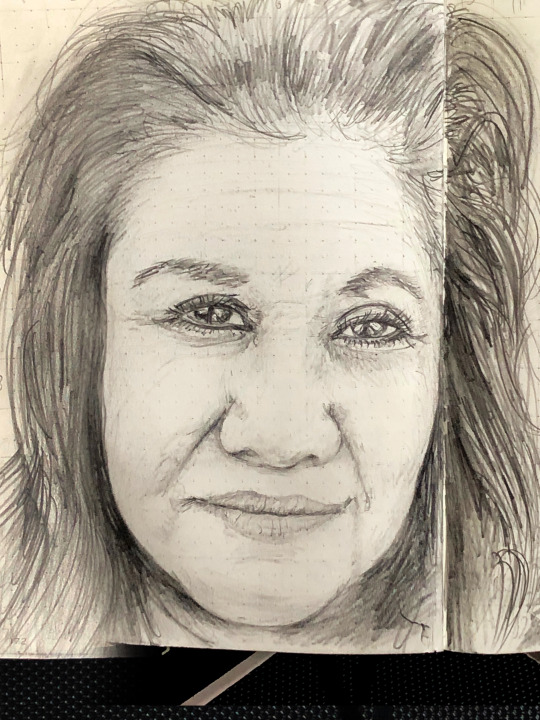


For better or worse, we don’t necessarily choose who comes into (or stays) in our lives. For better, Deb came into mine in the spring of life, when I was just a small town boy living’ in a lonely world, falling in love with her big sister. Soon after meeting them, she and the love of her life extended their friendship to me. First, they looked askance at this weird kid, then accepted and finally embraced me.
Thirty-three years ago they invited me to pile into their brand new 1990 Isuzu pickup with a camper shell for a road trip to San Isabel National Forrest in Colorado. It was an AMAZING trip. One of the most memorable of my life. The first time I had ever seen a real mountain, breathed alpine air, felt the chill night in the middle of summer! I never knew such experiences existed. New experience after new experience. It put me in the mind of Jean George’s, ‘My Side Of the Mountain’ wherein a young boy named Sam escapes to the Catskill mountains and lives on little more than his wits for a year by making a home in the burned out hollow of a tree. Every morning, I would get up early, hike in the wilderness and imagine that I had escaped my droll reality to a life there in that paradise. On one of those walks would I cut a small sapling into a walking stick. Long-forgotten, they thoughtfully saved this and recently gifted it back to me.
Every time I drive over Raton Pass on the southern border of the state, I remember the first time in that little pickup at 7800’ with those two dear friends-soon-to-be-family. We laugh together when the trip comes up and Deborah Anne points out that I had eaten the trip’s entire stash of homemade chocolate chip cookies before we ever left the great state of Texas. In my defense: 1) The cookies were delicious and 2) Texas is HUGE! Debbie & her heart understood John Muir’s famous statement: ‘The mountains are calling and I must go'. She and her family would answer that beacon many times in the following decades.
The second of three sisters, she has always been an upbeat, outgoing and infectious personality with a rapier observational wit. Always the constant and stable mother-figure, it took me years to believe the stories my wife would tell of her wild side before she settled down to care for a family and raise two rambunctious boys.
Growing up as I did with two sisters, it was an easy transition to include a new one in my life and as my own siblings and I grew distant over the years, she proved to be a wonderful surrogate-sister filling that emotional place in my heart. It has always brought me especially great joy that Debbie brightens my own wife’s disposition so and their relationship is perfectly portrayed by Louisa May Alcott in Little Women. If my own love is Jo, then Debbie would be analogous to Meg… maybe a dash of Beth from time to time. Perhaps sisters understand each other in a way that one one else (especially brothers) can. Neither she, nor those like her, realize the feelings of envy that many women feel toward families like her own. Not perfect by any stretch, but thoughtful, engaged and always always connected. I like to say ‘thank God that love is temporal and not geographic’, I have truly seen love defy time and space between my wife and her sisters.
Rich in the possession of a good man's heart, Deborah raised two children, drove trucks, roofed, baked cookies, worked disaster relief, started (& retired from) a career as a white-hat and now in the third chapter of life in this existence, I see her face new and terrifying realities. Always one to wear a brave face (what mother isn’t), you’d never know monsters stalk in her shadows. I suppose something else she is teaching me is that it isn’t the looming threats or realities that define us, but the faith we exercise when we face them, confident, as my dear sister is, that victory will be ours.
I wish words could heal us, they are the only power we have.
0 notes
Text
Miss New York Class of 1968
Amherst: Carolyn Dellman
Cattauragus County: Carol Chase
Geneva: Mary Jo Liss
Greater Niagara: Darcy Williamson
Jamestown: Linda Barnham
Lancaster: Arlinda Carol Zammito
Lewis County: Nancy Plemons
Manhattan: Dorothy Screen (1st RU & Swimsuit Prelim) 1st Black contestant at Miss New York
Oneida County: Mary Ann Dublanica
Southern Erie County: Sharon Drabik
Buffalo: Susan Garvey
Central…
View On WordPress
0 notes
Text
Women and Adversity: Donna Everhart, Novelist
Donna Everhart, Novelist (Photo by Jo Ann Mathews)
Women and Adversity:
Donna Everhart
Novelist
Pelican Bookstore in Sunset Beach, North Carolina arranged for novelist Donna Everhart to appear recently at Silver Coast Winery in Ocean Isle Beach. She writes—as it says on her website—“authentic, vivid Southern fiction.” Her fifth and most recent novel The Saints of Swallow Hill, was her topic. I…
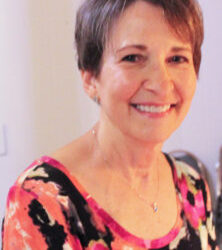
View On WordPress
#BeginningWriters#BlogsForWriters#DonnaEverhart#FindYourWritingNiche#HistoricalNovels#NorthCarolinaWriters#WomenAndAdversity#WomenWriters
0 notes
Text
The people who live inside airplanes
By Jacopo Prisco, CNN


How to live in an airplane (photos)
1 of 9
After losing her house to a fire, Jo Ann Ussery had a peculiar idea: to live in an airplane.
She bought an old Boeing 727 that was destined for the scrapyard, had it shipped to a plot of land she already owned, and spent six months renovating, doing most of the work by herself. By the end, she had a fully functional home, with over 1,500 square feet of living space, three bedrooms, two bathrooms and even a hot tub – where the cockpit used to be. All for less than $30,000, or about $60,000 in today’s money.
Ussery – a beautician from Benoit, Mississippi – had no professional connection to aviation, and was following the offbeat suggestion of her brother-in-law, an air traffic controller. She lived in the plane from 1995 to 1999, when it was irreparably damaged after falling off the truck that was moving it to a different location nearby, where it would have been open for public display.
Although she wasn’t the first person to ever live in an airplane, her flawless execution of the project had an inspirational effect. In the late 1990s, Bruce Campbell, an electrical engineer with a private pilot license, was awestruck by her story: “I was driving home and listening to [the radio,] and they had Jo Ann’s story, and it was amazing I didn’t drive off the road because my focus turned entirely to it. And the next morning I was placing phone calls,” he says.
A 727 in the woods
Campbell has now been living in his own plane – also a Boeing 727 – for over 20 years, in the woods of Hillsboro, Oregon: “I still stand on Jo Ann’s shoulder and I’m grateful for the proof of concept.” He has no regrets: “I would never live in a conventional home. No chance. If Scotty beamed me to inner Mongolia, erased my fingerprints and forced me to live in a conventional structure, I’d do what I have to do to survive – but otherwise, it’s a jetliner for me anytime.”
That’s not to say he wouldn’t do anything differently: “I made a lot of mistakes, including the whopper-class one: partnering with a salvage firm. Avoiding that and using superior transport logistics renders the costs much lower,” he explains.
His project cost $220,000 in total (about $380,000 in today’s money), of which roughly half was for the purchase of the plane. He says the plane belonged to Olympic Airways in Greece and was even used to transport the remains of the airline’s magnate owner, Aristotle Onassis, in 1975: “I didn’t know the plane’s history at the time. And I didn’t know that it had an old, 707-style interior. It was really, really awful compared to modern standards. It was functional but it just looked old and crude. Maybe the worst choice for a home.”
As a result, Campbell had to work on the plane for a couple of years before being able to live in it. The interiors are no-frills, with a primitive shower made out of a plastic cylinder and a futon sofa for a bed. During the harshest part of winter Campbell traditionally retreats to Miyazaki, a city in southern Japan with subtropical weather where he owns a small apartment. But the pandemic has made this difficult, and for the past three years he’s been living in the 727 year-round.
Intending to set up an airplane home in Japan as well, in 2018 he says he almost bought a second aircraft – a 747-400 – but the deal fell out at the last minute, because the airline (which Campbell won’t reveal) decided to keep the aircraft in service for longer than expected: “We had to put the project on hold and it stands that way to this day,” he says.
Campbell frequently gets visitors and even offers lodging in the aircraft free of charge, while in the summer he hosts larger public events with funfair attractions: “Artists perform on the right wing, guests dance in front or behind the wing in the forest, which for the big concerts becomes filled with all sorts of recreational venues. They’re not Disneyland class – just portable booths with different curiosities and little recreations, but they’re fun.”
Double fuselage

Joe Axline's two planes: One to live in, one to renovate. Joe Axline
If you think living in an airplane is extravagant enough, how about living in two? That’s the plan for Joe Axline, who owns an MD-80 and DC-9, sitting next to each other in a plot of land in Brookshire, Texas. Axline has lived in the MD-80 for over a decade – after getting divorced on April Fool’s Day in 2011 – and is planning to renovate the DC-8 and equip it with recreational areas such as a movie theater and a music room. He calls his grand plan “Project Freedom.”
“I’ve got less than a quarter of a million dollars in the whole project,” says Axline, who has very few running expenses because he owns the land and has built his own water well and sewer system: “The only thing that I have still left is electricity,” he adds.
For years, he even shared the plane with his children: “The kids are gone now, so it’s just me. Living in a house, you have a lot of space, but it’s all wasted space. My master bedroom is 10 feet by 18, which is not a bad size for a bedroom. I’ve got two TVs in it, plenty of space to walk around. My living room is good-sized, the dining room seats four, I can cook enough food for a whole bunch of people if they come over. I also have a shower and a toilet, so I don’t have to get out of the airplane to go to the restroom. The only thing that I don’t have here that I would have in a house is windows that open,” he explains, adding that he just opens the plane’s doors to let fresh air in.
The planes are visible from nearby roads, and Axline says that many drivers – their curiosity piqued – end up stopping by: “I have three or four people every single day. I call them my turistas,” he says. “They drive by and think, it’s so cool. Most of the time I wave them all over. I’ll say, if you got some time, I’ll give you a tour. And if I didn’t make the bed that day, who cares? Let’s see how real people live.”
Axline too was interested in a Boeing 747 – living in the “Queen of the Skies” is the airplane homeowner’s ultimate dream – but he gave up when he was confronted with the shipping costs: “The airplane itself was about $300,000, but the shipping cost was $500,000. Half a million dollars to move it. That’s because you can’t drive it through the roads, you’d have to tear it apart, cut it up, slice it and dice it and then put it back together.”

Jumbo Stay is a hotel in Stockholm's Arlanda Airport. Courtesy Jumbo Stay
Airplane DIY
There are other notable examples of airplanes converted to homes. One of the earliest is a Boeing 307 Stratoliner once owned by billionaire and film director Howard Hughes, who spent a fortune remodeling the interior to turn it into a “Flying Penthouse.” After being damaged by a hurricane, it was turned into an extravagant motoryacht and eventually purchased in the 1980s by Florida resident Dave Drimmer, who extensively renovated it and renamed it “The Cosmic Muffin.” He lived in the plane-boat hybrid for 20 years, before eventually donating it to the Florida Air Museum in 2018.
American country singer and Nashville Hall of Famer Red Lane, who had a past as a plane mechanic, lived for decades in a converted DC-8 that he saved from the scrapyard in the late 1970s. Lane, who passed away in 2015, also had no regrets: “I have never, ever woke up in this place wishing I was somewhere else,” he revealed in a 2006 TV interview.
Those who want to experience a night or two in an airplane home have a few options in the form of hotels; in Costa Rica, the Costa Verde hotel boasts a fully refurbished Boeing 727 – complete with two bedrooms and an ocean view terrace; in Sweden, Jumbo Stay is a hotel built entirely inside a Boeing 747, sitting on the grounds of Stockholm’s Arlanda Airport. And if you’re just looking to party, there’s another Boeing 747 that can be hired for events with up to 220 people, at Cotswold Airport in England, about 100 miles west of London.
If you want to leave transitional housing behind and fully take to life inside a fuselage, however, you must be ready for challenges: “You’ve got to have a passion for wanting to do this, because there’ll be so many problems that you’ll need to address that it can become overwhelming,” says Joe Axline, who lists sourcing the right airframe and finding a suitable location for it among the biggest hurdles.
That is perhaps why several of Bruce Campbell’s visitors over the years expressed interest in adopting this lifestyle, but none ever turned the dream into reality: “I think it’s pretty difficult for people: a few of my guests left convinced they wanted to do it and I sent them articulated instructions to help them along step by step, but none have established momentum,” he says.
But don’t let that discourage you, Campbell adds: “My primary advice is do it. Don’t let anybody shake your confidence. Work out all the logistics, and just do it.”
0 notes
Text
So I know Im a raging sociopath by southern standards but I think thats why I dont get the whole "share your pronouns all the time" thing. Like I will never be talking about some marketer in a sims video, or the customer service agent for a swimsuit website, or a cashier at jo-anns again and its deeply offputting to treat me like I will be.
1 note
·
View note
Text
Extremely Large Pile of Halloween Music Recs, 2020 Update!
(Reorganized a bit, and with a whole bunch more songs.)
Classical
Come Little Children - Erutan (ethereal classical)
Transylvanian Lullaby - Erutan (ethereal classical)
Transylvanian Lullaby - City of Prague Philharmonic Orchestra (orchestral classical)
A History of Horror (album) - City of Prague Philharmonic Orchestra
Double Trouble - City of Prague Philharmonic Orchestra (classical)
Carnival of the Animals: Aquarium - Camille Saint-Saens (eerie classical)
Danse Macabre - Camille Saint Saens (dark classical ballet)
Uranus, the Magician - Gustav Holst (orchestral classical)
The Sorcerer’s Apprentice - Paul Dukas (orchestral classical)
Night on Bald Mountain - Modest Mussorgsky (orchestral classical about witches)
In the Hall of the Mountain King - Edvard Grieg (classical)
Dies Irae - Mozart (threatening choral/orchestral classical)
Don Giovanni, a cenar teco - Mozart (growly baritone/bass opera - the bit where Don Giovanni gets dragged to hell, both in the supernatural religious sense and in the modern internet slang sense)
Toccata and Fugue in D Minor - Bach (classical pipe organ)
String Quartet No. 8 in C Minor (III) - Shostakovich (classical string quartet)
Dance of the Knights - Sergei Prokofiev (classical)
Flowering Vines - Unwoman (ominous cello waltz)
The Carny of Mr Dark - Deathwatch Beetle Repairman (goth pipe organ)
Castlevania organ medley - Ulla Olsson (pipe organ)
This Is Halloween - Vitamin String Quartet (classical string quartet)
Vitamin String Quartet Performs The Nightmare Before Christmas (album)
The Vampire Masquerade - Peter Gundry (classical)
Waltz of the Bone King - Peter Gundry (classical)
Masquerade Suite: Waltz - Aram Khatchaturian (dark classical waltz)
The Comedians, Op. 26: Waltz - Kabalevsky (uneasy classical waltz)
Grim Grinning Ghosts - Myuu (instrumental piano)
Rock, alternative, rockabilly
Haunted - Ashcan Orchid (folk rock)
The Last Steampunk Waltz - Ghostfire (rock waltz)
Bad Moon Rising - Rasputina (cello metal)
In the Hall of the Mountain King - Apocalyptica (metal cello)
Get Your Kicks on Route 666 - Exdevils (metal)
Shoot The Zombies - Andrew Huang / Songs To Wear Pants To (sing-along folk)
Something Wicked That Way Went - Vernian Process (circus rock)
Dark Carnivale - Frenchy and the Punk (indie rock)
Come Alive (War Of The Roses) - Janelle Monae (rock)
Gallows - Coco Rosie (goth indie/alternative)
My Favorite Things - Youn Sun Nah (creepy vocal)
Annabel Lee - Psyche Corporation (electronic alternative)
The Devil Wears a Suit - Kate Miller-Heidke (alternative)
Toxic - Yael Naim (neo-folk)
Crazy For You - Venus de Vilo (indie rock)
Witchy Woman - The Eagles (classic rock)
Goodnight Moon - Shivaree (alternative)
Bela Lugosi’s Dead - Nouvelle Vague (alternative)
Bloodletting (The Vampire Song) - Concrete Blonde (alternative)
Tombstone - Suzanne Vega (alternative)
Off With Your Head - Mz Ann Thropik (alternative)
Poison Apple - Charlene Kaye (rock)
This Is The Night - Harry Potter soundtrack (rock)
Look Out Young Son - Grand Ole Party (rock)
Painkiller - Birdeatsbaby (rock)
Haunted - Frantic Flintstones (rockabilly)
Freaked Out and Psyched Out - Frantic Flintstones (album)
Zombie Riot - Batmobile (rockabilly)
Alice in psycholand - Nekromantix (rockabilly)
She’s My Witch - The Radiacs (rockabilly)
Werewolf - Southern Culture on the Skids (rockabilly)
Human Fly - The Cramps (rockabilly)
Munster Beat! - Martinibomb and The Coconut Monkeyrocket (‘60s pop remix?)
Circus punk, dark cabaret
Charmed, I’m Sure - Circus Contraption (dark circus cabaret)
We’re All Mad - Circus Contraption (dark circus cabaret)
Pink Elephants on Parade - Circus Contraption (dark cabaret)
The Last Waltz - The Magnificent Seven (dark cabaret waltz)
Tango de la Muerte - The Magnificent Seven (rock tango)
Bloody Bones - Beats Antique (dark circus waltz)
Monster Tango - Mucca Pazza (circus punk marching band)
Rumanian Dance No. 1 - Mucca Pazza (circus punk marching band)
Mr. Spider Goes Home to Spiderland - Mucca Pazza (circus punk marching band)
The Trouble - Birdeatsbaby (dark cabaret)
Theatre Noir - Robyn Cage (dark cabaret) (music video)
Jekyll and Hyde - Theoretics (hip-hop)
Lament for a Toy Factory - Dr. Steel (circus rock)
Bogeyman Boogie - Dr. Steel (circus rock)
Circus Apocalypse - Vermillion Lies (dark cabaret)
When You’re Evil - Voltaire (dark cabaret)
BRAINS! - Voltaire (dark cabaret)
Careless Whisper (cover) - Unwoman (electronic cabaret)
Katrinah Josephina - Universal Hall Pass (a capella)
Buried in Water - Dead Man’s Bones (dark waltz)
Metropolitan Waltz - Orpheum Bell (folk waltz)
The Buccaneers’ Waltz - GurdyBird (electronic folk?)
Black Waltz - Amber Asylum (electronic circus thing)
Creepy Clown Symphony - Myuu (self-explanatory)
Americana, bluegrass, blues, soul, funk
In Hell I’ll Be In Good Company - The Dead South (Americana)
Stranger - The Devil Makes Three (Americana)
First and Last Waltz - Nickel Creek (Americana)
Ghosts of Mississippi - The Steeldrivers (bluegrass)
7 Devils - The Goddamn Gallows (bluegrass, rock)
Old devils - William Elliot Whitmore (bluegrass)
Death Come Creeping - Stefan Grossman (bluegrass)
The Devil Wears a Suit and Tie - Colter Wall (Americana)
Shankill Butchers - Sarah Jarosz (Americana)
Hellhound - Shawn James (acoustic blues)
Voodoo Woman - Koko Taylor (blues)
Your Hoodoo Man - Studebaker John & The Hawks (blues)
Voodoo - The Neville Brothers (New Orleans soul)
Voodoo - Jo Jo Zep & The Falcons (soul, funk)
The Witch Queen of New Orleans - Redbone (funk)
I Put a Spell on You - Screamin’ Jay Hawkins (rock ‘n roll)
Jazz, swing
In the Hall of the Mountain King - Duke Ellington (jazz)
I Put a Spell on You - Nina Simone (slow jazz)
I Put a Spell on You - Morgan James (slow jazz)
Old Devil Moon - Frank Sinatra (jazz)
Black Magic Woman - Janice Hagan and Kenny Vehkavaara (jazz)
I’d Rather Be Burned As A Witch - Eartha Kitt (jazz)
Thriller (1930s Jazz Cover) ft. Wayne Brady - Postmodern Jukebox (swing) (alternate link)
The Devil With The Devil - Larry Clinton Orchestra (swing)
Swingin’ at the Seance - Glenn Miller (big band swing)
Spooks - Louis Armstrong (swing)
The Headless Horseman - Bing Crosby (swing)
Skeleton Jangle - Dan Levinson’s Roof Garden Jass Band (swing)
Resurrection Waltz - Lee Presson and the Nails (big band waltz)
Spooky - Puppini Sisters (Andrews Sisters-style swing)
Headless Horseman - Kay Starr (swing)
Hell (Remastered 2016) - Squirrel Nut Zippers (swing)
Ghost of Stephen Foster - Squirrel Nut Zippers (swing)
Memphis Exorcism (Remastered 2016) - Squirrel Nut Zippers (swing)
Boogie Man - Lee Presson and the Nails (swing)
Rattlin’ Bones - Preservation Hall Jazz Band (New Orleans swing)
Save My Soul - Big Bad Voodoo Daddy (New Orleans swing)
Skeletons in the Closet - Louis Armstrong (swing)
Skeletons in the Closet - The Moon-Rays (swing)
The Mack - Beat Circus (swing - doesn’t seem very Halloween at first, until the tuba player gets murdered in the middle of the song. I swear it makes sense.)
Balrog Boogie - Diablo Swing Orchestra (swing)
Voodoo Mon Amour - Diablo Swing Orchestra (swing)
The House Is Haunted - Casa Loma Orchestra (swing)
Skeleton Jangle - Viva La Rocca (swing)
Two Little Men in a Flying Saucer - Ella Fitzgerald (swing)
Grim Grinning Ghosts - The Dapper Dans (barbershop)
Grim Grinning Ghosts - The Dapper Dans (in person) (barbershop)
Halloween Medley - The Cadaver Dans (barbershop)
Pop
Full Moon Tonight - Silvastone feat. Bellsaint (pop)
Demons - Hayley Kiyoko (pop)
Season of the Witch - Lana del Rey (pop)
A Little Wicked - Valerie Broussard (pop)
Halloween - Aqua (pop)
Sweet Dreams (Are Made Of This) - violin/cello/bass cover - Simply Three (electronic pop)
Shoot The Zombies (Pink Fluffy Unicorns Remix) - Andrew Huang (happy pop)
I Put a Spell on You (no movie dialogue) - Winifred Sanderson (pop musical)
Electro-swing
Fear & Delight - The Correspondents (electro-swing)
Midnight - Caravan Palace (electro-swing) (alternate link)
Midnight - Swingrowers (different electro-swing)
Old House - Dirty Honkers (electro-swing)
Devil’s Samba - Sim Gretina (Latin-flavored electro-swing)
Devil’s Got My Soul - Victor and the Bully (rock/electro-swing)
Cuphead: Railroad Wrath (Electro-Swing Remix) - The Musical Ghost (electro-swing)
Cuphead: One Hell of a Time (Electro-Swing Remix) - The Musical Ghost (electro-swing)
Bendy and the Ink Machine: The Devil’s Swing - Fandroid (electro-swing)
Bendy and the Ink Machine: The Devil’s Swing (Glitch-Swing Remix) - The Musical Ghost (glitch-swing)
Undertale: Spider Dance (Glitch-Swing Remix) - The Musical Ghost (glitch-swing)
Undertale: Spider Dance (Sim Gretina Remix) - Sim Gretina (funk/glitch/chiptune)
Luigi’s Mansion (Remix) - Qumu Music (chiptune, electro-swing)
Undertale: Ghost Fight & Dummy (Peggy Suave Swing Remix) - Sim Gretina (electro-swing)
Electronica, EDM
Backstreet Bones: Everycorpse - Sim Gretina (uhhh…spoopy Halloween EDM remix of Backstreet Boys? If you click on nothing else, click on this one. It’s very worth it, I promise.)
Macabre Rotting Girl Feat. Kathy-chan - Sim Gretina (adorable electro)
Sim Gretina feat. Kathy chan: Let The Monsters Free (µThunder Remix) - µThunder (EDM)
Ghost in the Machine - PrototypeRaptor (complextro)
Spooky Tune - PrototypeRaptor (complextro)
Nullifcation [Underground] (Legend of Zelda remix) - PrototypeRaptor (grimy EDM)
Grim Grinning Ghost (Remix) - The Living Tombstone (EDM)
Undertale: Megalovania (Sim Gretina Remix) - Sim Gretina (EDM)
Undertale: Spooktune (Sim Gretina Remix) - Sim Gretina (EDM)
Spooky Scary Skeletons (Remix) - The Living Tombstone (EDM)
Warren Zevon: Werewolves of London (Daheen Rmx) - Daheen (psytrance)
Interlude: Limbo - Yoshimasu Kamiya (ambient horror)
Bloodstone - Amon Tobin (atmospheric glitch)
Volk - Thom Yorke (ambient horror)
The Horror - RJD2 (instrumental hip-hop)
Crybaby - Drum & Lace (indescribable brooding atmospheric)
The Kid Who Drowned At Summer Camp - Hot Sugar (instrumental hip-hop)
The Darkest Evening of the Year - Emancipator (downtempo)
Halloween Funtime REMIXMONSTRousMASHup - Pretty Lights (EDM)
HALLOWEEN Theme Song (DJ Deville Trap Remix) - DJ Deville (trap)
The Oogie Boogie (Man) - Duke Skellington (glitch-hop)
Stranger Things Theme Song (Michael Jobity & The Foreign Machine Remix) - Michael Jobity, The Foreign Machine (synthwave - my personal favorite remix of this theme)
Stranger Things Theme Song (C418 REMIX) - C418 (synthwave)
Stranger Things (Louis Futon Flip) - Louis Futon (chillstep)
Stranger Things Theme (Slicey Remix) - Slicey (trap)
Stranger Things - Theme Song (Oscar Wylde Trap Remix) - Oscar Wylde (trap)
Ghostbusters (Kill Paris Remix) - Kill Paris (EDM, future funk - by far my favorite remix of the Ghostbusters theme)
The Ghostbusters Theme (Remix) - The Living Tombstone (EDM)
Ghostbusters Remix - Matheo (EDM)
Ghostbusters Remix - Fat Noize (dubstep)
Lady Gaga: Monster (Starfuckers Remix) - Starfuckers (EDM)
Lady Gaga: Monster (Chew Fu Remix) - Chew Fu (electro-house)
Michael Jackson: Thriller (James Egbert Remix) - James Egbert (electro-house)
Michael Jackson - Thriller [The Reflex Halloween Disco Edit] - The Reflex (moody, indescribable IDM(?))
Beetlejuice (Dubstep Mix) - Figure (dubstep)
The Addams Family (Figure Remix) - Figure (dubstep)
Hedwig’s Theme (KE KRA’s Trap Remix) - KE KRA (trap)
Stress - Justice (French electronic…something)
Things I thought were funny
Werewolf Bar Mitzvah - 30 Rock (parody novelty record)
A Hard Days Night of the Living Dead - The Zombeatles (zombie rock)
Schüttel deinen Speck - Peter Fox (witches’ dance video) (the track by itself)
In the Hall of the Mountain King - Portsmouth Sinfonia (experimental orchestra from the ‘70s - google them, you absolutely will not regret it)
Gangnam Busters - FAROFF (Ghostbusters/Gangnam Style mashup - annoyingly, it works far better than you think it will)
208 notes
·
View notes
Text
Black Nationalism, Feminism, and the Moynihan report
Selection from Separate Roads to Feminism: Black, Chicana, and White Feminist Movements in America’s Second Wave, by Benita Roth, 2010.
Black Women and Changes in the Civil Rights Movement
The Civil Rights movement of the 1950s and 1960s featured Black women activists in prominent roles (Crawford et al. 1990; Giddings 1984; Gray White 1999; hooks 1981; Joseph and Lewis 1981; McNair Barnett 1993; Payne 1989,1990; Robnett 1997; Standley 1990; Terborg-Penn 1978). Although the most public leaders were men, Black women played significant parts in the movement, both on local and national levels, contributions that were noted within the Black community at the time (see Bender 1969; Thomas 1964). Southern Black women's networks were central to the struggle, since Black women had been active in clubs and other political organizations that agitated on behalf of the race, such as the Montgomery Women's Political Council. Among Black college students, 48 percent of participants in sit-ins and Freedom Rides were women (Prestage 1980); Orum's (1970:72) survey of Black college students' participation in Civil Rights protest found that nearly twice as many women as men in the sample participated in protest (2,047 women versus 1,142 men).
Black women probably participated in the movement in disproportionate numbers (Payne 1990), filling roles that formed the backbone of the movement and exercising leadership "behind the scenes." Women were most often "bridge" leaders (Robnett 1997), using local networks to link new activists to national organizing. Their "invisibility" as leaders within the movement (McNair Barnett 1993) has been exacerbated by the tendency to define leadership as belonging only to those with public-speaking roles. For example, Ella Baker chose a place in the Southern Christian Leadership Conference (SCLC) that was out of the spotlight so as not to threaten male egos; nonetheless, she was a key participant in that organization (at one point its interim executive director) and also helped "midwife" the Student Nonviolent Coordinating Committee (SNCC) into existence. Baker insisted that women's work was at the core of the Civil Rights struggle:
“All the churches depended... on women, not men. Men didn't do the things that had to be done and you had a large number of women who were involved in the bus boycott. They were the people who kept the spirit going.” (Payne 1989:890)
And Ella Baker was not alone. Gloria Richardson, Fannie Lou Hamer, Rosa Parks, Ruby Doris Smith Robinson, Diane Nash, and Jo Ann Robinson form an incomplete list of women who were heroes of the movement, if not as widely visible to the public as someone like Dr. Martin Luther King, Jr. (Brock 1990; Fair Burks 1990; Giddings 1984; Locke 1990).
Much of Black women's energy in the movement was used for stereotypical "female" tasks, but the Civil Rights movement also gave Black women a chance to work alongside men in "nontraditional ways" (Marable 1978; Omolade 1994). Women went to jail (and were beaten there) as they handled bus boycotts, field projects, voter registration drives, and challenges to state and national Democratic party leadership. Cynthia Washington had her own voting rights project in Bolivar County, Mississippi, which she did not consider to be an "exceptional" thing for a woman to be coordinating (Washington 1979:238). Even later Black feminist critiques of sexism within the Civil Rights movement acknowledged that women have been given the opportunity "to do far more significant work than white women in their movement" (Bender 1969, citing Eleanor Holmes Norton). Omolade (1994:124) even argued that "traditional" female work took on new meaning in the "radical context and communal settings" of the movement, enabling women to become not just "wives, mothers, or maids," but also "lovers, friend, and comrades."3
Two intertwined changes in the Civil Rights movement of the mid-1960s affected Black women's roles within the movement. First, the social base of the movement shifted; it became younger and more northern. The southern community base that had fostered women's participation became less important to the Civil Rights movement as the student vanguard changed that movement. Second, an ideological program of advocating middle-class, traditional gender roles as a means of remaking the revolutionary Black family developed as part of Black Liberation ideology. Black women who had been active in social protest organizations were asked to become merely supportive and secondary to men. [...]
The Black Liberation ideology that accompanied the Civil Rights movement's shift to a northern, younger social base was characterized by what Giddings (1984) has called a philosophy of "masculinism." This ideological development proved crucial to the emergence of Black feminism. By the mid-1960s, integrationist approaches in the Civil Rights movement gave way to Black Power strategies and resurgent Black nationalism, forming the two major ideological components of Black Liberation. Black Liberation as an ideology was more suited to working within urban and northern contexts, and more popular with younger African Americans; sympathy for the "Black Power" slogan was greater among the young and those born in the North, whose southern roots were more attenuated (Aberbach and Walker 1971).
There were initially significant differences between Black Power and Black nationalism, but by the end of the decade, the two were difficult to distinguish from each other. SNCC was instrumental in the development of Black Power ideology; Stokely Carmichael and Charles Hamilton--authors of Black Power: The Politics of Liberation in America--were SNCC leaders when they began to formulate their ideas in 1966 and when their book was published in 1967 (Matusow 1971). Black Power political philosophy held that African Americans should strive for self-sufficiency and economic progress. Carmichael and Hamilton, holding up ethnic immigrant groups as models, argued that Black people needed to question the benefits of mere formal equality; to become economically empowered, they needed to turn inward, toward strengthening Black communities. Building on older nationalist ideas of self-sufficiency within the Black community, they expressed frustration at the limits of the Civil Rights agenda.
Carmichael and Hamilton were silent about Black women helping the community to gain economic empowerment. Virtually the only mention they make of women's roles was that of
“another set of leaders in the Black community in Lowndes County. This was a group of middle-aged ladies, who knew the community well and were well known. They were to play a very important role in the political organization of the Blacks. They had considerable influence in the Black community--being staunch church members, for example--but they possessed no power at all with the white community.” (Carmichael and Hamilton 1967:102-103)
In contrast to Black Power's silence about Black women, Black nationalism in the mid-1960s was strongly characterized by masculinist discourse and practice.4 According to the nationalists, the truly "revolutionary" Black woman was a supportive one, who kept house while the Black man kept revolution, so as to allow him to reclaim his public manhood (Marable 1983). Despite the work of Black women in the Civil Rights movements, and the very public presence of a small number of women in Black nationalist organizations themselves (e.g., Angela Davis, Kathleen Cleaver, and Elaine Brown), Black nationalist organizations such as Maulana Ron Karenga's US movement and the Black Muslims advocated restricting opportunities for activism by women (Brown 1992). In this traditionalist take on women's roles, the Black nationalist resurgence of the 1960s differed from the older formulations. Whatever tensions existed between Black men and women in activist groups (see Gray White 1999), older Black nationalism did not seem to require as rigid an ideology of traditional sex roles, as was evidenced by Amy Garvey's strong advocacy of women's equality and the key role she played in the 1920s Garveyist movement (Adler 1992; Gray White 1999; White 1984).5
During the 1960s, masculinism was very much present in other parts of the Left and in other parts of the Black community; for example, the traditional gender role ideology of the much-admired Black Muslims added legitimacy to masculinist ideas about delimiting women's roles in the movement (Kashif 1970). However, Black feminists (both then and now) have argued that the masculinist cast of Black nationalism in the 1960s was a reaction to the "Black matriarchy" theory in the 1965 Moynihan report, The Negro Family: The Case for National Action (Dubey 1994; Giddings 1984; Gray White 1999; hooks 1981; Murray 1975; see Pittman quoted in Cantwell 1971; Wallace 1996). The resurgent masculinism of Black Liberation was therefore tied to state intervention into the relationships that existed within the Black family; Black feminism in part responded to the aftereffects of this intervention. In reaction to the Moynihan report, Black masculinists attempted to counter the depiction of Black men as the most abject victims of racial discrimination, with Black women putatively better off by virtue of participation in the labor force. The report concluded that the Black family was "matriarchal" and "deviant," because women held an inappropriately large amount of power (this despite the fact that Black women's status as the most economically deprived group in the country was also noted). This "deviant" family structure hindered the progress of Black men, and, by extension, that of the Black community itself (Dubey 1994; see also Marx Ferree and Hess 2000).
Black nationalists condemned the report as racist, but many responded that the patriarchal family had to be reinstituted so as to right the historical wrongs done to the Black male. With this analysis in place, Black nationalist organizations "prescribed clearly restricted roles for black women in the movement" (Dubey 1994:18). The behind-the-scenes roles that women played in the Civil Rights movement were no longer far enough behind the scenes; women were to be supportive and subordinate, producing "male warriors for the revolution" within newly patriarchal families (Dubey 1994:18). Existing Black family structures, which were based on extended kinship networks, and where illegitimacy carried less stigma than in middle-class white society, were to be changed in favor of the nationalist model of a nuclear patriarchal family. This stance on the need to return to "traditional"--even if largely fictional--gender roles in the Black community was also accompanied by calls for Black women to end their use of birth control. At the Black Power conference held in Newark in 1967, organized by Amiri Baraka, an anti-birth control resolution was passed (Ross 1993); the possibility of Black women helping to carry out Black genocide by using birth control would continue to be a hotly contested issue between Black nationalists and emerging Black feminists, as will be discussed later.
In general, then, the Moynihan report was seized upon by many Black male activists as both a manifestation of white racism and proof that Black women out of their traditional place were abetting that racism. As Gray White (1999:200) argued, the report "legitimized the perception of black women as unnaturally strong and emasculating." But the masculinist reaction to Moynihan also found itself challenged by Black feminist organizing, as some Black women activists, facing problems in their ongoing struggles as activists, responded by uncovering the contradictions that confronted them.
Black Feminists Respond: Early Organizations
By 1968, Black feminists had responded publicly to the Black Liberationist/nationalist emphasis on traditional gender roles. Their critiques were nuanced ones, directed as much at white society as at the changes in the Black movement. They condemned advocacy of a patriarchal family structure by Black Liberationists even as they attacked the racism they found in Moynihan's depiction of the Black family. Additionally, Black feminists were staunchly anticapitalist, attributing the shortcomings of existing movements to a failure to carry through on the full implications of revolutionary politics. [...]
The Black Woman, Black Liberation, and Middle-Class Style
The members of TWWA [Third World Women’s Alliance] and the Mount Vernon Group were not entirely on their own; Toni Cade (Bambara) (1970a:107) wrote that in the late 1960s, it seemed "that every organization you can name has had to struggle at one time or another with seemingly mutinous cadres of women getting salty about having to man the telephones or fix the coffee while the men wrote the position papers and decided on policy." By 1970, the voices of the "mutinous cadres" of women described by Cade (Bambara) were gathered into her watershed edited collection entitled The Black Woman. Conceived as a dialogue with the Black movement--but unable to avoid some dialogue with white women's liberation--the book was organized out of her "impatience" with the lack of real information about the lives and politics of Black women (1970b: 10). The contributors to the collection were primarily writers and activists who spoke as members of older women's groups, Black liberation groups, Civil Rights groups, New Left groups, and no groups at all.
As might be expected, many of the pieces in The Black Woman were characterized by concerns over Black Liberationist/ nationalist reactions to the Moynihan report, and the specific failure of those reactions to maintain revolutionary consistency regarding gender roles. As noted, [Frances] Beal's "Double Jeopardy" appeared in the collection; one of the Mount Vernon Group's position papers appeared, entitled "On the Position of Poor Black Women in this Country" (which, like "Statement on Birth Control," was widely reprinted and distributed throughout the white women's liberation movement). In this piece, [Patricia] Robinson and her group continued criticism of middle-class Black leaders as a self-interested elite leading poor Blacks down the garden path of capitalism, linking class, gender, and racial oppression as belonging to one grand package:
“Capitalism is a male supremacist society.... All domestic and international political and economic decisions are made by men and enforced by males.... Women have become the largest oppressed group in a dominant, male, aggressive, capitalistic culture.... Rebellion by poor black women, the bottom of a class hierarchy... places the question of what kind of society will the poor black woman demand.... Already she demands the right to have birth control, like middle class black and white women.... She allies herself with the have-nots in the wider world and their revolutionary struggles.... Through these steps ... she has begun to question aggressive male domination and the class society which enforces it, capitalism.” (Robinson et al. 1970a:196)
Robinson and the group argued for a united front of middle-class Black and white women who would join poor Black women in continuing to expose male oppression. At the "bottom of a class hierarchy," poor Black women in concert with others would be able to lead this united front toward liberation for all exploited people (1970a: 196).
The anticapitalist critique of American society and the Black Liberation movement was present in other contributors' work in The Black Woman. In her essay, Gwen Patton (1970) also argued that capitalism was at the root of what she called the "Victorian Philosophy of Womanhood." According to Pam Allen, herself an activist in the Civil Rights and white women's liberation movement, Patton sent Bob Allen (Pam Allen's husband) a draft of her piece for the collection in August of 1968; Pam Allen thought it should be published because "it would be the first time we (or perhaps any paper) have printed a black woman's objection to women assuming supportive roles to black men" (Allen 1968b). Arguing that Black male militants should be more savvy about the intent and impact of the Moynihan report, Patton chastised Black male activists for not seeing through the report:
“Black men... responded] positively toward Black Power and could assert their leadership, which included a strengthening of their masculinity Black women will now take the back position [A] victory for the capitalistic system! Black men are now involved with keeping their women in line by oppressing them more, which means that Black men do not have time to think about their own oppression. The camp of potential revolutionaries has been divided.” (1970:146-147)
Patton recommended that Black women challenge Black men directly, so that the Victorian philosophy "of men on top, women on bottom" (1970:147-148) could be destroyed and the road could be cleared for real revolution.
Besides Patton, other contributors to The Black Woman wrestled directly with the Moynihan report, with the Black Liberationist "manhood" preoccupation that was restricting Black women's activism, and with the effects of capitalism on the Black community (Cade [Bambara] 1970a; Carey Bond and Perry 1970; Lincoln 1970; Lindsey 1970). Kay Lindsey's essay in The Black Woman echoed the idea that Black militants had been seduced by capitalist promises, and that the "Black middle class" were "pseudo-escapees into the mainstream" who had assumed "many of the institutional postures of the oppressor, including the so-called intact family" (1970:86). Lindsey argued that white establishment efforts to "encourage the acquisition of property among Blacks via Black Capitalism... would probably serve to further intensify the stranglehold on women as property" (1970:86-87).
And contributors also had concerns about Black Liberation's anti-birth control stance, following the stance first articulated by the Mount Vernon Group. Black Liberationist anti-birth control politics did not stop at rhetoric; in 1969, Black nationalists from the United Movement for Progress closed down a birth control clinic in Pittsburgh, which was subsequently reopened by community women (Lindsey 1970). Cade (Bambara) (1970c: 163-164) wrote of attending a workshop given by a Black Liberation group that degenerated into a diatribe against birth control. She described how "one tall, lean dude... castigated the Sisters to throw away the pill and hop to the mattresses and breed revolutionaries and mess up the man's genocidal program." One of the women present responded with a question about the "dude's" financial responsibility in this: "[W]hen's the last time you fed one of them brats you been breeding all over the city, you jive-ass so-and-so?"
The writings contained in The Black Woman represented a polyphonous response to the traditional gender ideology that Black Liberationists were espousing as revolutionary; in other places, Black feminists were agreeing that Black Liberation's sexism was rooted in their unquestioning adoption of middle-class values alien to the Black community. On the West Coast, in Seattle, Nina Harding, then a thirty-one-year-old Black Studies major at the University of Washington, a mother, and an employee of the Seattle Opportunities Industrialization Center, wrote a position paper entitled "The Interconnections Between the Black Struggle and the Woman Question," which she presented at the annual conference of the Seattle Radical Women in February 1970. In it, Harding also argued that Black Liberation, otherwise critical of capitalism, had accepted traditional ideas about women's roles, and she blamed these retrograde attitudes on unquestioning acceptance of the Muslims; but she was also critical of Black "bourgeois sisters and silent sisters," who hold to "WASP standards, be those standards interpreted by the Muslim or Nationalist advocates" (1970:4). Other Black feminists in other cities echoed the idea that Black Liberation was importing white middle-class values into the heart of the Black community (Holmes Norton 1970). When interviewed by a Los Angeles Times reporter in June of 1970, Margaret Wright, a member of the Los Angeles Black women's liberation group, declared it impossible for Black families to be shaped like white ones because of class domination:
“[T]he black man is saying he wants a family structure like the white man's. He's got to be head of the family and women have to be submissive and all that nonsense. Hell the white woman is already oppressed in that setup.” (1972:608)
On both coasts, then, Black feminists rejected attempts by Black Liberationists to use middle-class gender ideology to bolster Black male "manhood."
#feminism#feminist history#black feminism#black women#women of color#united states#us history#moynihan#moynihan report#separate roads to feminism#benita roth#gender#patriarchy#capitalism#racism
16 notes
·
View notes
Text
TOO MANY GIRLS
October 8, 1940

Too Many Girls was an RKO film musical based on the stage musical of the same title. It was produced and directed by George Abbott, who had also directed the Broadway production. The music was composed by Richard Rodgers, the lyrics by Lorenz Hart, and the book was by George Marion, Jr. although the screenplay was adapted by John Twist.

Too Many Girls opened on Broadway on October 18, 1939, at the Imperial Theatre, running to April 21, 1940, and transferred to the Broadway Theatre on April 22, 1940, closing on May 18, 1940. The cast featured Desi Arnaz, Diosa Costello, Marcy Westcott, Eddie Bracken, Richard Kollmar, Van Johnson, and Hal Le Roy. Musical Staging was by Robert Alton, scenery by Jo Mielziner, and costumes by Raoul Pène Du Bois.

The musical takes place in Skowhegan, Maine and Pottawatomie College in Stop Gap, New Mexico.
Synopsis ~ Connie Casey, an energetic celebrity heiress, wants to go to Pottawatomie College in Stop Gap, New Mexico, her father's alma mater, to be near her latest beau, British playwright Beverly Waverly. To protect her, and without her knowledge, her tycoon father sends four Ivy League football players as her bodyguards, Clint Kelly, Jojo Jordan, Manuelito and Al Terwilliger, who sign a contract with an ‘anti-romance’ clause. They also join the college's terrible football team, which immediately becomes one of the best in the country. Clint falls in love with Connie, but when she discovers he is her bodyguard, she decides to go back East. The bodyguards follow her, leaving the team in the lurch. The people of Stop Gap go after them, and they are brought back just in time for the big game. Connie declares her love for Clint, and he leads the team to victory.
PRINCIPAL CAST

Lucille Ball (Consuela ‘Connie’ Casey) was born on August 6, 1911 in Jamestown, New York. She began her screen career in 1933 and was known in Hollywood as ‘Queen of the B’s’ due to her many appearances in ‘B’ movies. “My Favorite Husband” eventually led to the creation of “I Love Lucy,” a television situation comedy in which she co-starred with her real-life husband, Latin bandleader Desi Arnaz. The program was phenomenally successful, allowing the couple to purchase what was once RKO Studios, re-naming it Desilu. When the show ended in 1960 (in an hour-long format known as “The Lucy-Desi Comedy Hour”) so did Lucy and Desi’s marriage. In 1962, hoping to keep Desilu financially solvent, Lucy returned to the sitcom format with “The Lucy Show,” which lasted six seasons. She followed that with a similar sitcom “Here’s Lucy” co-starring with her real-life children, Lucie and Desi Jr., as well as Gale Gordon, who had joined the cast of “The Lucy Show” during season two. Before her death in 1989, Lucy made one more attempt at a sitcom with “Life With Lucy,” also with Gordon.

Desi Arnaz (Manuelito Lynch) was born in Santiago, Cuba on March 2, 1917. After leaving Cuba, he formed his own Latin band, and literally launched the conga craze in America. It was on the set of Too Many Girls (1940) that he and Lucille Ball met. They soon married and approximately 10 years later formed Desilu Productions and began the “I Love Lucy” shows in 1951. Desi and Lucille had two children, Lucie Arnaz and Desi Arnaz Jr. At the end of “The Lucy-Desi Comedy Hour” in 1960, the two divorced. He was diagnosed with lung cancer and died on December 2, 1986 at age 69.
Manuelito: “I'm not conceited. I am the greatest player in fifty years, but I'm not conceited.”

Richard Carlson (Clint Kelly) makes his first and last appearance with Lucy and Desi, although his wife, Mona, was featured as one of Don Loper’s models on “The Fashion Show” (ILL S4;E20) in 1955.
Ann Miller (Pepe) had appeared with Lucille Ball in three films: Stage Door (1937), Having Wonderful Time (1938), and Room Service (1938). In 1954, she appeared with the Arnazes on “MGM’s 30th Anniversary Tribute”.
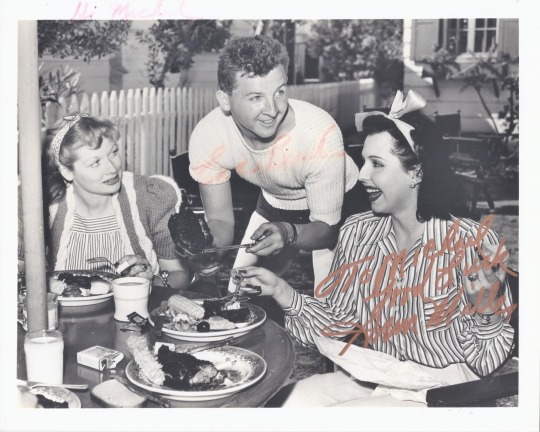
Eddie Bracken (Jojo Jordan) makes his only screen appearance with Lucy and Desi, although he was part of the Broadway cast of Too Many Girls and was friends with the Arnazes off screen as seen in the above photo with Ann Miller and Lucy.
JOJO: “Well, I'm not exactly wonderful, but I'm awfully attractive in a dynamic sort of way.”
Frances Langford (Eileen Eilers) makes her only appearance with Lucy and Desi. She worked extensively with Bob Hope on his USO tours.
Hal LeRoy (Al Terwilliger) makes his only screen appearance with Lucy and Desi, although he was part of the Broadway cast of Too Many Girls.
Libby Bennett (Tallulah Lou) makes her only screen appearance in Too Many Girls. She had also been seen in the Broadway stage production.

Harry Shannon (Mr. Harvey Casey) appeared with Lucille Ball in 1942′s The Big Street. On “I Love Lucy” he played Jim White the photographer in “Men Are Messy” (ILL S1;E8) in 1951 (above center). Musical fans will remember Shannon as Rosalind Russell’s father in the 1962 musical film Gypsy.
Mrs. Teweksbury says Mr. Casey is one of the richest individuals in the country. He reportedly has $7.50 more than Henry Ford. He is Connie’s father and Chairman of Casey Conglomerated Industries.
Douglas Walton (Beverly Waverly) was a Canadian-born actor making his only appearance with Lucy and Desi. He played poet Percy Shelley in the film The Bride of Frankenstein (1935). He left film acting in 1950, before the advent of television.
Beverley Waverly is a British playwright.
Chester Clute (Lister) did four films with Lucille Ball before Too Many Girls and four after it.
Lister is an alumni of Pottawatomie College, like his boss Mr. Casey.
Ivy Scott (Mrs. Tewksbury) was also in the stage production of Too Many Girls and only did one more film in Hollywood, Higher and Higher in 1943.
Mrs. Tewksbury is the proprietor of The Hunted Stag (or, as Mr. Lister calls it, The Stunted Hag), an Inn where the boys are waiters.
Byron Shores (Sheriff Andaluz) makes his only screen appearance with Lucy and Desi. He was also seen in the stage production of Too Many Girls. His last film was in 1944.
UNCREDITED FILM CAST

Iron Eyes Cody (Indian) made a career of playing Native American characters despite the fact that he was of Italian ancestry. He next worked with Lucy and in 1942’s Valley of the Sun, again as an American Indian character. He played an Eskimo in a 1959 episode of “The Lucy-Desi Comedy Hour,” but is probably best remembered as the Indian that sheds a single tear in the ‘Keep America Beautiful’ ads that ran from 1971 to the 1980s.
Jay Silverheels (Indian) also played a Native American character in Valley of the Sun (1942) with Lucille Ball. He was best known for playing Tonto on “The Lone Ranger”.
Chief John Big Tree (Chief)
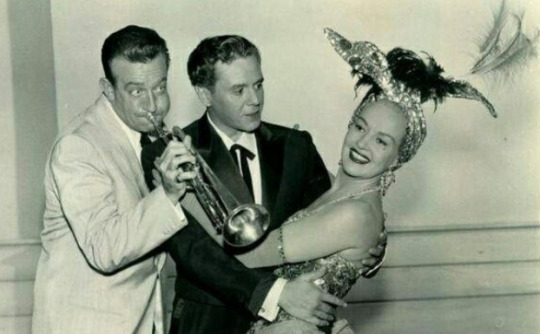
Harry James (Orchestra Leader) also played himself in Lucille Ball’s Best Foot Forward in 1943. With his wife, Betty Grable, he was seen in “Lucy Wins a Racehorse” (LDCH S1;E4) in 1958.
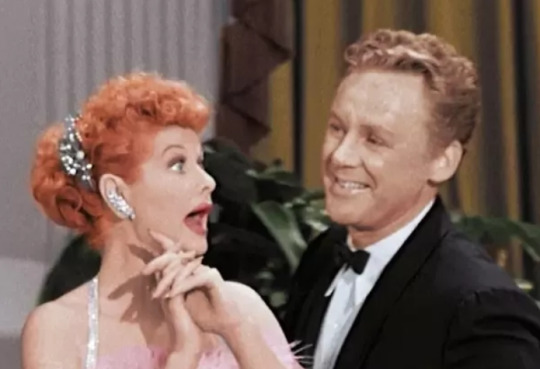
Van Johnson (Chorus Boy) was also seen with Lucy in the films Easy to Wed (1946) and Yours, Mine and Ours in 1968. He played himself on one of the most popular episodes of “I Love Lucy,” “The Dancing Star” (ILL S4;E27) and played both himself and a look-alike on “Here’s Lucy” in 1968. He was also a member of the Broadway cast of Too Many Girls.
Johnson has only two lines of dialogue in the film but is often visible in group scenes.
Shep Houghton (Chorus Boy) made two other films with Lucille Ball and was seen in the background of two episodes of “The Lucy Show” and one episode of “Here’s Lucy.” Houghton was one of the Winkie Guards in 1939’s The Wizard of Oz and a Southern Dandy in Gone With the Wind (1939).
John Benton (Chorus Boy)

Mildred Law (Coed) appeared on “I Love Lucy” in “Return Home From Europe” (ILL S5;E26) playing a TWA flight attendant who attends to Lucy’s cheesy baby, Chester. This was her penultimate screen credit.
Pamela Blake (Coed) also appeared uncredited with Lucille Ball in Stage Door (1937).
Amarilla Morris (Coed) was seen with Desi Arnaz in the 1942 film Four Jacks and a Jill as the girl in the revolving door.
Other Coeds: Janet Lavis, Ellen Johnson, Vera Fern, Peggy Drake, Zita Baca, Anna Mae Tessle
Homer Dickenson (Mr. Casey's Butler) immediately followed this film with A Girl, A Guy, And A Gob (1941) also starring Lucille Ball.
Grady Sutton (Football Coach) from 1935 to 1945, Sutton did five films with Lucille Ball.
Dorothy Vernon (Faculty Extra) also did The Bowery (1933) and Valley of the Sun (1942) with Lucille Ball.
Dan White (Faculty Extra) had a small role in the 1970 TV special “Swing Out Sweet Land” in which Lucille Ball voiced the Statue of Liberty.
Others: Sethma Williams (Marie), Tommy Graham (Hawker), Averell Harris (Detective), Michael Alvarez (Joe)
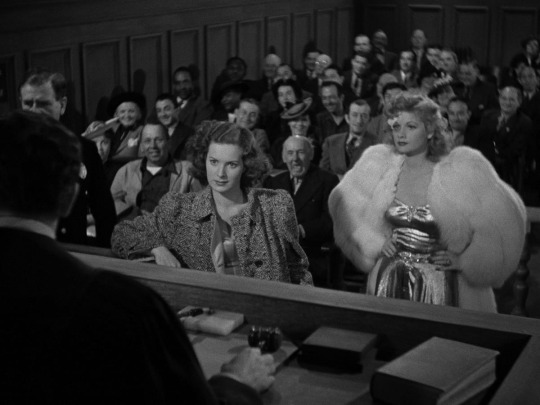
WHEN LUCY MET DIZZY
Lucille Ball met Desi Arnaz for the first time at the RKO studio commissary, while Too Many Girls was in rehearsals. She was in full costume and make-up after performing a fight scene for another film, Dance, Girl, Dance (1940, above): she wore a slinky gold dress slit halfway up the thigh and sported a black eye. Arnaz was seated at the same table as director George Abbott, who introduced the two. Arnaz was not impressed by Ball, thinking she “looked like a two-dollar whore who had been badly beaten by her pimp." After the encounter, he asked Abbott to fire Ball from Too Many Girls, claiming she was “too tough and common for the role." He also advised that her reputation as Queen of the B movies might negatively impact his much-anticipated film debut, advice Abbott thankfully ignored.
“A Cuban skyrocket burst over my horizon!” ~ Lucy about Desi

“Those damned big beautiful blue eyes!” ~ Desi about Lucy
That night, Arnaz was rehearsing “She Could Shake the Maracas" when Ball walked in, now wearing a yellow sweater and tight-fitting beige slacks. Not recognizing her, Arnaz turned to the piano player and whispered “Man, that is a honk of woman!" The pianist reminded Arnaz of his earlier meeting with Ball. Lucille approached them to say hello. "Miss Ball?" Arnaz said, just to make sure that there was no mistake. "Why don't you call me Lucille? And I'll call you Dizzy."
Lucy and Desi have very little interaction in the film, but when he sees Connie for the first time, he gets weak in the knees and falls to the ground, in awe of her beauty. Despite this, Manuelito’s romance is with Pepe, not Connie. History re-wrote that chapter!
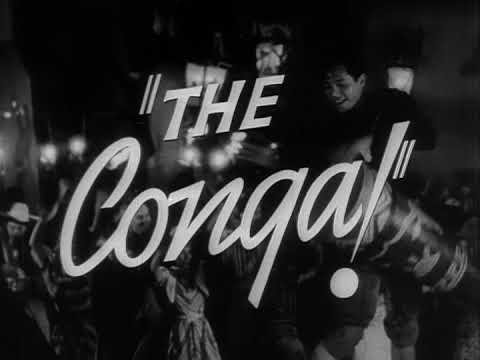
TOO MANY SONGS!
Heroes in the Fall - Male Chorus
You're Nearer - Connie, Pepe, Eileen, and Tallulah Lou
Pottawatomie - Mr. Casey and Chorus
'Cause We Got Cake - Eileen and Chorus
Spic 'n' Spanish - Manuelito and Pepe
Love Never Went to College - Eileen
Look Out! - Eileen and Pepe
I Didn't Know What Time It Was - Connie, Clint, and Jojo
You're Nearer - Connie, Manuelito, Eileen, Pepe, and Tallulah Lou
Conga
Songs cut from the Broadway show:
Tempt Me Not - Manuelito, Clint, and Chorus
My Prince - Connie
I Like To Recognize the Tune - Jojo, Connie, Eileen, Clint, and Al
The Sweethearts of the Team - Eileen
She Could Shake The Maracas - Pepe and Manuelito
Too Many Girls - Manuelito
Give It Back To The Indians - Eileen

TOO MANY TRIVIA!
RKO paid $100,000 for the rights to the Broadway musical.
Filming on Too Many Girls began on June 22, 1940.
Camerman Russell Metty briefly took over shooting for Frank Redman when Redman had to attend a funeral.
Uncredited performers Van Johnson and Harry James would go on to be two of the film’s biggest stars, except for Lucy and Desi, eclipsing many of the film’s principal cast like Hal LeRoy, Douglas Walton, and Libby Bennett.
Lucille Ball’s vocals were dubbed by Trudy Erwin, one of Kay Kyser’s singers.
Everyone imported from Broadway (except Hal LeRoy) was making their screen debut with Too Many Girls.
After making the film, Van Johnson and Mildred Law returned to the Broadway production. Instead of chorus roles, Johnson assumed the role of Jojo (originated by Bracken) and Law now played Tallulah Lou, originated by Leila Ernest.
On Broadway the character of Connie was originated by Marcy Wescott in her final Broadway stage role.
TOO MANY REFERENCES!
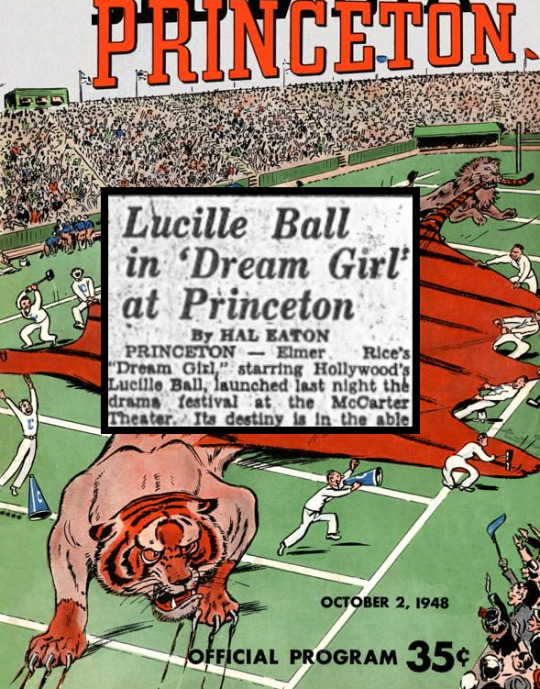
Each of Connie’s bodyguards plays football for an Ivy League college: Yale, Harvard, and Princeton. Manuelito is still deciding on a college, but is considering Princeton, where Clint goes. There is talk about a contentious game that includes Princeton. In Lucille Ball’s radio show “My Favorite Husband” (1948), George Cugat (later Cooper) hopes his future son will play for Princeton, his alum. Coincidentally, Lucille Ball did two plays at Princeton University’s resident theatre company, McCarter: Hey Diddle Diddle (1937) and Dream Girl (1947).
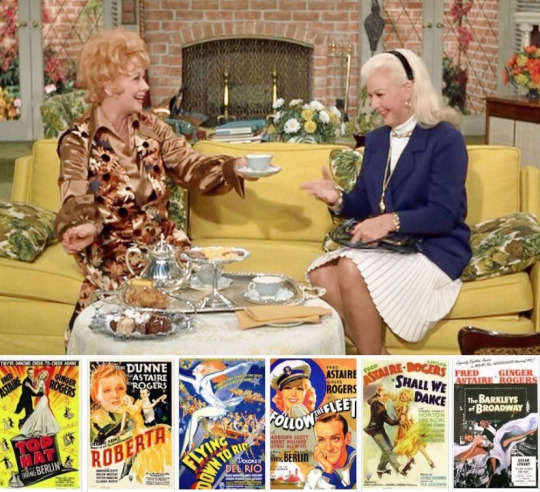
One of the characters mentions movie star Ginger Rogers, one of the top female box office stars of the time. She was also a good friend of Lucille Ball having done five films together. Rogers’ mother Lela tajght acting classes at RKO, later inspiring Ball to create the Desilu Playhouse at Desilu Studios. Rogers played herself on a 1971 episode of “Here’s Lucy.”
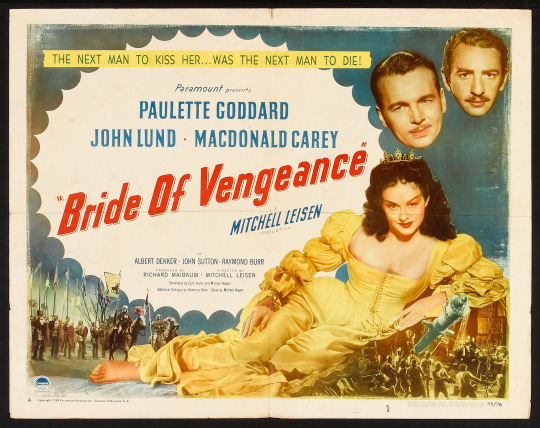
Mr. Casey compares his daughter Connie with Lucretia Borgia (1480-1519) was the illegitimate daughter of a pope and his mistress, a famous beauty, notorious for the suspicious deaths and political intrigue that swirled around her. Today her name has become synonymous with a beautiful, but scheming woman who would stop at nothing - including murder - to get what she wants. In 1949, Lucille Ball’s friend played Lucretia Borgia for Paramount in Bride of Vengeance.

Although Pottawatomie College and the town of Stop Gap are fictional, Pottawatomie is the name of a Native American tribe, although they were mostly found in the Great Lakes region, not in New Mexico. The Pottawatomie Massacre occurred from May 23 to May 26, 1856, resulting in the death of five pro-slavery settlers north of Pottawatomie Creek in Franklin County, Kansas. This was one of the many violent episodes in Kansas preceding the American Civil War.

TOO MANY CRITICS!
Too Many Girls premiered on October 8, 1940 at Loew's Criterion Theatre in New York. Critical reviews were generally positive, although Bosley Crowther of The New York Times wrote that Too Many Girls was “a pleasant, light-hearted and wholly ingenuous campus film" but that director George Abbott "has permitted it to sag in the middle, at which point the thin spots baldly show. If the intention was to be impressive, it has failed. For 'Too Many Girls' is a simple, conventional rah-rah picture, without any place for pretense. And there is not enough to it, on the whole, for Mr. Abbott to squander dancers recklessly."
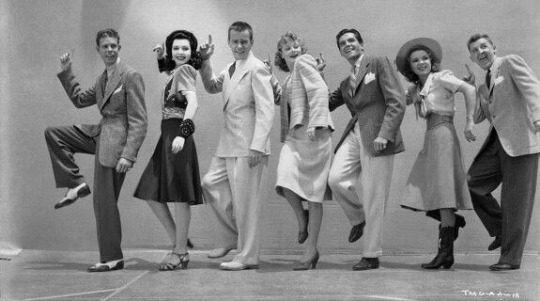
TOO FAST FORWARD
This film's earliest documented television presentations began in Los Angeles Tuesday May 8, 1956 on KHJ (Channel 9), much to the chagrin of Lucille Ball and Desi Arnaz who were embarrassed by it, and objected to its frequent showings to no avail.
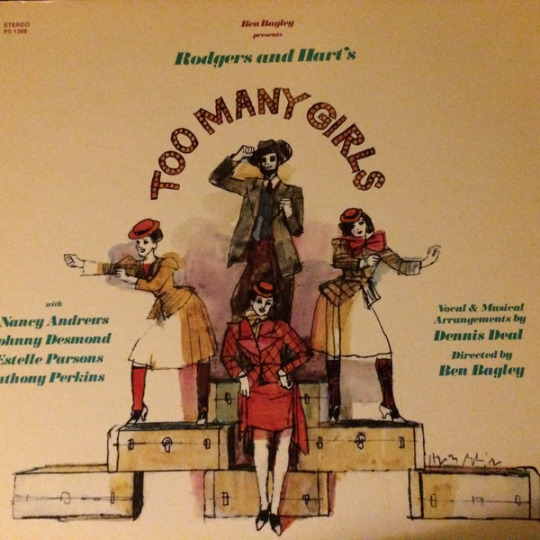
In 1977, the music of Too Many Girls was rereleased on vinyl with performers Nancy Andrews, Johnny Desmond, Estelle Parsons, and Anthony Perkins!

The film is referenced in “Lucy & Desi: Before the Laughter” a 1991 TV movie about starring Frances Fisher (above) and Maurice Bernard, as well as “Lucy” (2003), another TV film in which Lucy (Rachel York) and Desi (Danny Pino) meet on the set; Desi in his football uniform and Lucy bruised from the filming of Dance, Girl, Dance.
Clips from the film are featured in Lucy and Desi: A Home Movie (1993).
#Too Many Girls#Lucille Ball#Desi Arnaz#1940#George Abbott#Broadway#musical#Van Johnson#Ann Miller#Eddie Bracken#Richard Carlson#Frances Langford#Hal LeRoy#Harry James#Conga#Rodgers and Hart#Dance Girl Dance#Frances Fisher#Iron Eyes Cody
12 notes
·
View notes
Text
Grinnin Like a Jackass Eatin’ Briars

Grinnin’ Like a Jackass Eatin’ Briars
On Sale Now at Amazon
I WAS CADDYWONKED FROM THE GET-GO.
That’s how this vivid, hilarious and ultimately poignant memoir begins, under the cover of darkness in 1962, as an embryonic Jeff Batton was whisked away by his brothel-owning grandmother and soon-to-be-birth mother to a home for unwed mothers in Savannah, Georgia.
After he was put up for adoption (displayed in a supermarket delicatessen case, as he recalls it), Jeff’s new parents arrived in the form of Mr. and Mrs. Batton. Jo Ann adhered to the standards of Emily Post and the Bible (in that order), and Curtis was a third-generation Georgia farmer and true southerner who filled his tea glass with something stringer each night. Jeff’s new home: a seven-hundred-acre peanut and tobacco farm so far from town that they had to pipe in sunshine.
Coming of age during the civil rights movement, Jeff experiences both the Tom Sawyer existence of idyllic barefoot freedom—including a deep friendship with a kid from the other side of the tracks—and blatant racism at home, along with the confusion and angst of figuring out who he was and how he fit into this world.
Wile the memoir has the South as it launching point, the narrative travels far and wide beyond the trope of a barefoot childhood, to New York City, Hong Kong, London and beyond. Lovingly told, with warm and stark transparency and laugh-out-loud humor, Grinnin’ Like a Jackass Eatin’ Briars is an important book about uncovering our own truth, looking at the world from a different angle and, ultimately, find the courage to embrace what we find.
“A compelling first-person account… Elements of his life are desperately sad yet recounted with a brisk frankness… From recounting his endeavors to find his birth mother to describing his struggles with fatherhood, Batton presents a richly textured autobiography—readers grappling with their own sexuality may well relate to his journey of self-discovery.
A captivatingly candid and sharply written account.”
—Kirkus Reviews
4 notes
·
View notes